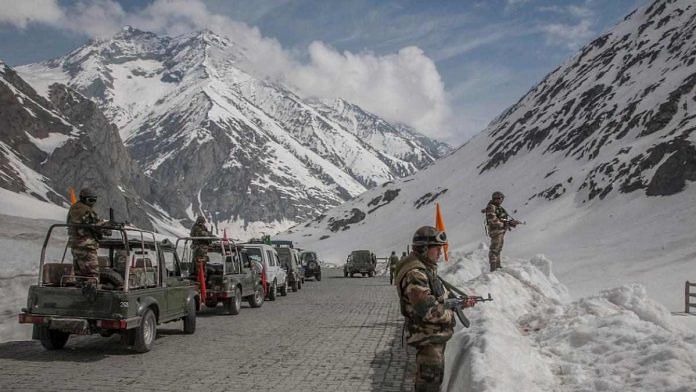A deadly cyberattack that worked as a test mule, then a physical lunge across high-altitude icy features are part of China’s strategy to constantly keep India in a reactive mode.
First, it was the cyberattack on 23 November, which paralysed the All India Institute of Medical Sciences (AIIMS) in Delhi. And now, it is the unilateral actions across the McMahon Line in Arunachal Pradesh’s Tawang district. New Delhi’s unwillingness, or inability, to take the initiative has allowed Beijing to run amok with changing rules of engagement as and where it deems fit. This pattern is likely to continue, given the fondness to adopt the ostrich posture at the highest level in India.
This is in stark contrast to other Asian neighbours of China or even those who identify Beijing as the principal national security threat globally. India’s continued timidity vis-a-vis China emboldens Beijing policymakers to keep pushing the red lines of acceptable behaviour. So, despite incontrovertible evidence of elements in China hacking into AIIMS Delhi servers, India’s unwillingness to officially pin a name on the culprit further motivates the country to meddle with the undeclared boundary line in western Arunachal Pradesh. There is nothing unusual about the intrusion attempt in Tawang other than that it happened in December.
Beijing tracks New Delhi’s moves
What makes little sense is that the first official acknowledgement about an altercation in Tawang was made on 9 December, when the terrain would have required many more days for preparation and execution. The basic sense of high-altitude mobilisation and logistics suggests China was embarking on this provocative adventure as India was focused on its latest series of state assembly elections. Given India’s penchant for electoral fortunes over policy, China timed its attempted assault to maximise benefits. Beijing analyses India’s obsession with elections as a critical flaw in its ability to pursue policies. It seems to know New Delhi better than India does.
This is part of China’s strategy to keep India engaged in a diplomatic dialogue while honing its own military skills and infrastructure. The talks buy time by giving news-hungry India tidbits of information about being busy with diplomatic progress. Even if it hasn’t amounted to much in the end, as more than 15 rounds of China-India talks suggest over Ladakh, Beijing hasn’t moved positions on the ground to accommodate India. It has only further consolidated control over its acquired territory since April 2020. Where India gained from a military perspective, it, unfortunately, gave away diplomatically.
After every diplomatic engagement with India, China seems to read the tea leaves far better than New Delhi does. It has clearly concluded that India is not ready for a fight as it simply doesn’t have the money. That it doesn’t have a stomach is given from the silence at the highest level. Indian policymakers have declared their inability to fight because of financial constraints, which is not lost on China. For nothing else explains the compulsions of the armed forces to implement a recruitment scheme—Agnipath—that only exacerbates the deep shortages in troop numbers.
At the same time, India dithers over sanctioning a third aircraft carrier after INS Vikrant, even as analysts and geography declare that it is the best bet to keep a check on Chinese expansionism. The reluctance to sanction the third aircraft carrier—INS Vishal—project flies in the face of India’s indigenisation programme, where it was supposed to have embarked on a journey of self-sufficiency. This third carrier is supposed to be India’s safety bet, both in terms of training opportunities as well as operational deployment. But India is unwilling, or unable, to sanction the project, even as the country continues to engage China diplomatically and economically.
Also read:
China knows India’s weak spots
The fact that India continues to engage China economically and that the relationship grows at an astronomical pace is not lost on Chinese policymakers. They understand that India seeks economic substance over political or military progress. Nothing else explains the simple arithmetic of India’s trade figures with China, even when it is known to have reneged on agreements, intruded into Indian territory and defied international norms of military-diplomatic exchanges.
The latest Tawang crisis should be read as a part of China’s pattern of probing Indian preparedness, provoking a reaction, and then consolidating its position. China may or may not have gained any territory in this skirmish, but it is a tactic frequently employed with India. And that has been repeated ad nauseum only because Beijing knows India’s room for manoeuvre is limited, largely by its own timidity. It makes little sense for the External Affairs Minister to constantly repeat the same position when no other institution of the State is willing to bell the cat, or unable to, or as in the case of the Army, not allowed.
Manvendra Singh is a Congress leader, Editor-in-Chief of Defence & Security Alert and Chairman, Soldier Welfare Advisory Committee, Rajasthan. He tweets @ManvendraJasol. Views are personal.
(Edited by Zoya Bhatti)






